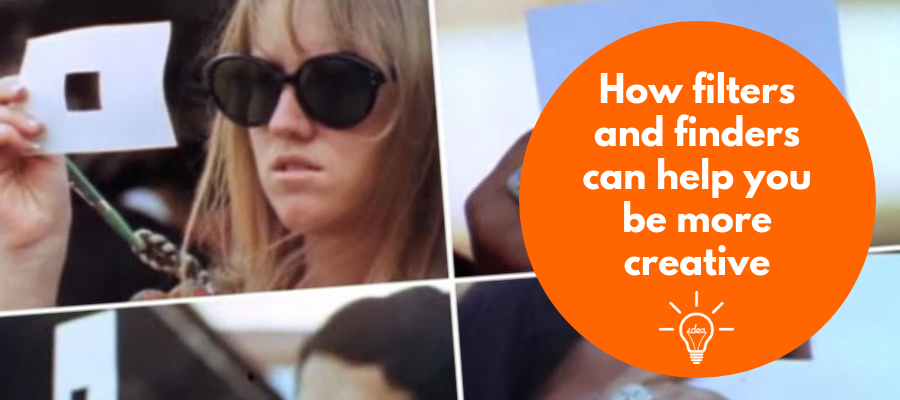Visual thinker and fan of all things artistic Austin Kleon recently shared an experience he had visiting the Corita Art Center In Los Angeles. There, he became acquainted with the concept of using “finders” to see the world differently.
Corita Kent was an artist with an innovative approach to design and education. In the 1960s, her vibrant serigraphs drew international acclaim. She believed that in order to understand the world around us, we must take it in one small piece set a time.
To do this, she developed the concept of finders, which limit our view in much the same way there a movie director arranges his hands into a rectangle to frame a shot. Here’s how she explains this fascinating concept:
“[The finder] is a device, which does the same things as the camera lens or viewfinder. It helps us take things out of context, allows us to see for the sake of seeing, and enhances our quick-looking and decision-making skills.
“An instant finder is an empty 35mm slide holder. Or you can make your own by cutting a rectangular hole out of a heavy piece of paper or cardboard—heavy enough so that it won’t bend with constant use. You can then view life without being distracted by content. You can make visual decisions—in fact, they are made for you.”
From my experience and learnings about creativity and visual thinking, this technique is quite solid. Deconstructing a challenge by breaking it into its component pieces enables our brains to make new meanings and connections – and ultimately to be able to see the world through a different lens – with no distractions.
Filters in mind mapping software serve the same function – enabling us to see a smaller slice of our information at one time, hiding all of the “noise.” Through creative use of filtering, we can examine the challenge before us in creative ways.
Similarly, focus in/focus out performs the same function, albeit at a less granular level. Invoking it causes your mind mapping software program to display only the currently selected branch. The rest of your map is temporarily hidden from view.
How does this help?
By removing distractions and enabling you to concentrate on building out one branch of your mind map at a time. When you’re done adding to it, you can simply “focus out” and view the entire map once again.
In both cases, these capabilities enable you to see your information in smaller pieces – in much the same way that holding up an empty 35 mm slide holder or striking the iconic movie director pose lets you look at your surroundings with a narrower “lens.”
If you’re not using these helpful “finders” in your favorite mind mapping software, why not? Now is the time to experiment with these methods of filtering or narrowing your view. I predict you’ll find that they help you see new ideas and solutions that weren’t visible when you were looking at ALL of your mind map’s content.


Leave a Reply